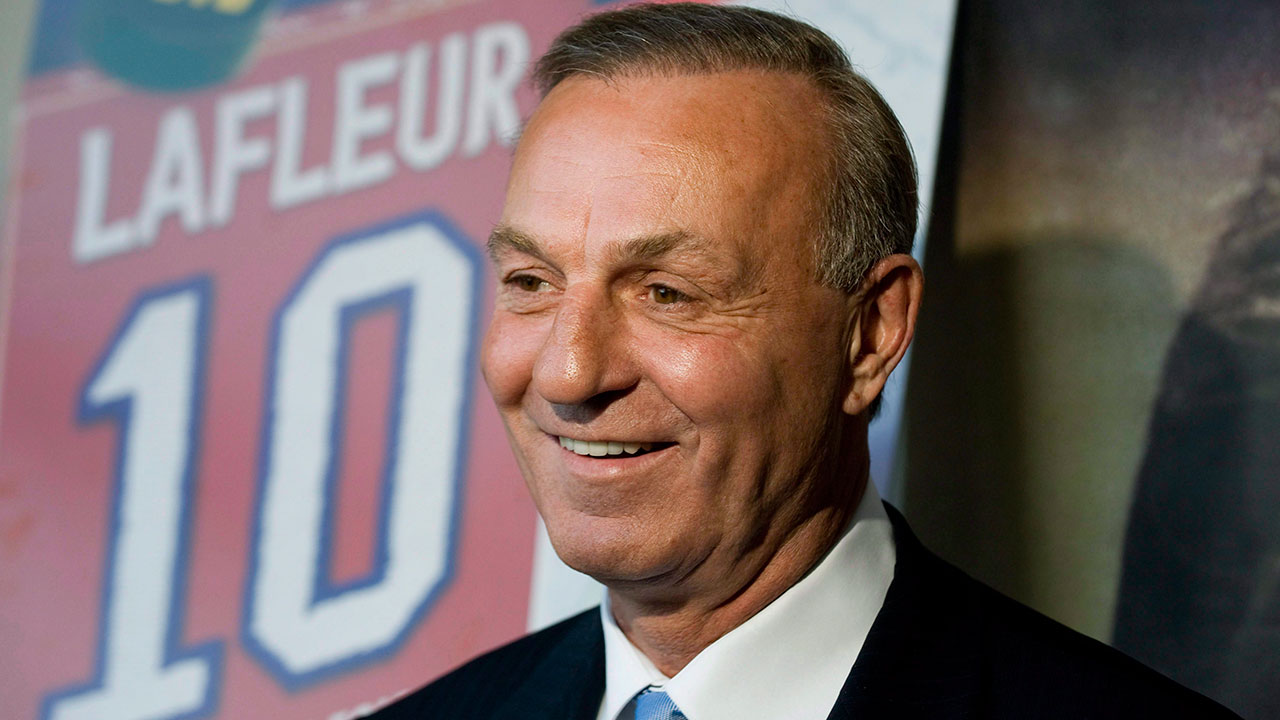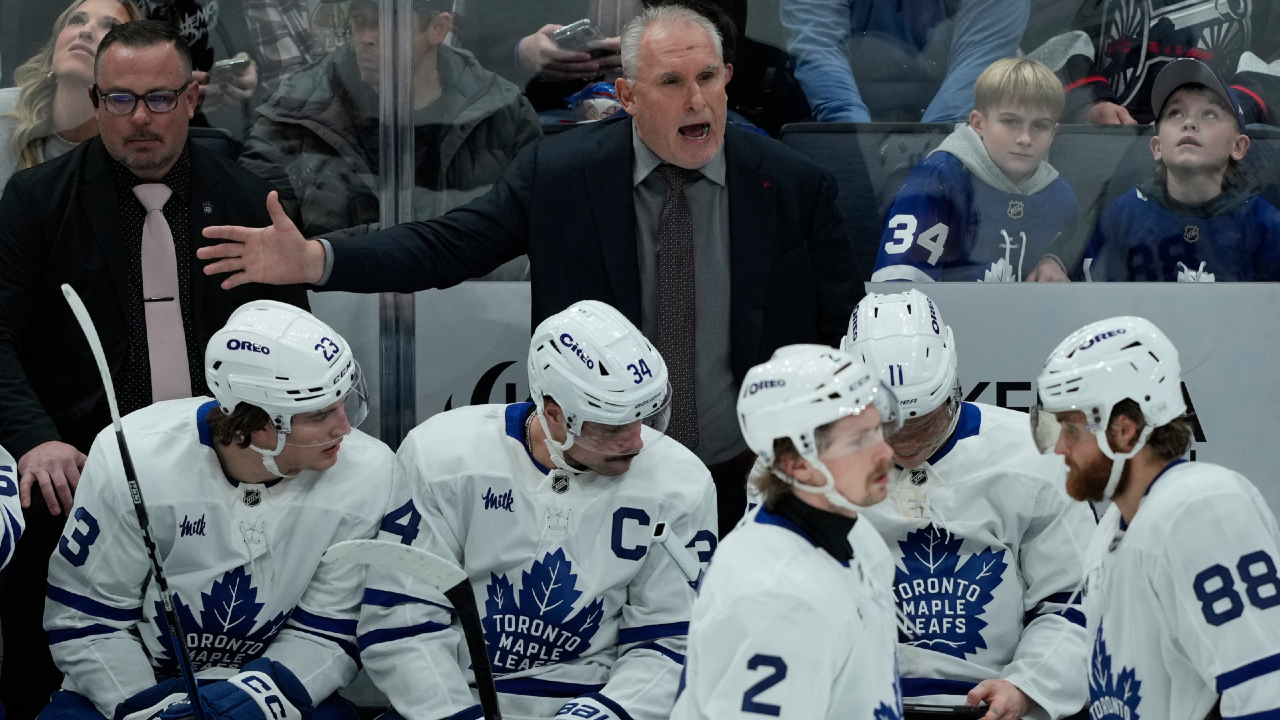
Guy Lafleur, the beloved Montreal Canadiens icon whose indelible mark on the storied franchise transcended far beyond his era, has died. He was 70.
Lafleur had been receiving treatment for cancer since September of 2019, when a cancerous white spot was found on his lung by chance while he was undergoing quadruple bypass heart surgery. Two months later, he underwent another surgery to remove both the upper lobe of his lung and lymph nodes. The cancer returned in October 2020, spurring Lafleur to resume his treatment again.
Lafleur began his NHL career with the Canadiens in 1971, stepping into the void created by the retirement of the legendary Jean Beliveau. He became a fixture during the Canadiens’ dynastic run in the 1970s, winning five Stanley Cups, while amassing a sparkling trophy case of individual accolades.
The man who became known to many outside Quebec as The Flower, stemming from the English translation of his name, won the Hart Trophy as the NHL’s most valuable player twice and the Art Ross Trophy as the league’s leading scorer three times.
The recognition came from his peers, too, as he was honoured with what was then called the Lester B. Pearson award — now known as the Ted Lindsay Award — as the players’ choice for league MVP. His success, perhaps predictably, spilled over into the playoffs as well, where he won the Conn Smythe Trophy in 1977 as the post-season MVP.
On the ice, Lafleur was one of the most prodigious scorers of his time — or any time. He was the first NHL player to score at least 50 goals and 100 points in six consecutive seasons and to this day, decades after his final retirement in 1991, he remains atop several of the Canadiens all-time lists. He is the leader in regular-season points (1,246), assists (728) and single-season points (136, holding the first through sixth places in that category). He has the most 40-goal, 50-goal and 100-point seasons (six each), and leads in game-winning goals in a season (13) and in a career (94).
For all the history those stats encompass, they come up short when attempting to capture Lafleur’s specific magic.
“He’s not the easiest player to play with because he’s all over the ice,” Steve Shutt, a fellow Canadiens great, once said. “He doesn’t know what he’s going to do, so how can I know?”
Lafleur was a Jackson Pollock painting on ice, a frenetic innovator who pushed the boundaries of his art beyond what had ever been conceived, a singularly dynamic force that turned an everyday sight as simple as a man on skates with a puck on his stick into a masterpiece — something you had seen before, perhaps, but never quite like that.
Most nights, his spectacle alone was worth the price of admission.
“Besides his enormous ability and great desire, Guy had extraordinary charisma,” Scotty Bowman, the Canadiens coach during the 1970s dynasty, said. “He had the ability to bring spectators to the rink and then show them something unusual.”
His creativity at times bordered on controlled chaos, and made him a target of opposing teams whenever he laced up his skates. He was battered, clutched and grabbed, hooked and slashed, and none of it ever appeared to matter.
Lafleur wasn’t one to retaliate. He just won.
“He is constantly being hammered and fouled,” Larry Robinson, the former Canadiens defenceman, said. “But he never lets it bother him, he never tries to retaliate and just keeps on going. It’s as if he’s saying, ‘You want to foul me? Well, that’s your problem, not mine.’”
For most of his career, he was the unsolvable problem for his opposition. But it didn’t start that way.
The Canadiens had bet big on the Quebec native, trading up in the draft and choosing Lafleur to be Beliveau’s successor over Marcel Dionne, another star francophone. As a rookie, Lafleur saw little ice time on a Canadiens team filled to the brim with veteran forwards and rumblings ricocheted through the Montreal faithful that choosing Lafleur over Dionne had been a grave error. A mere two months into his career, he was booed on home ice at the Forum.
But the ice time came with time and, by his fourth season, the debate over his selection was a distant memory, not an active discussion. He scored 119 points, a shiver that presaged the fever of his performances to come as he tallied six straight seasons with 50 or more goals and would pull off a three-peat of the Art Ross Trophy.
“He is the most ‘goal-dangerous’ player I’ve ever seen,” Harry Sinden, the general manager of Boston Bruins during that era, once said.
The championship banners Lafleur won would hang forever. The Canadiens, their philosophy and his place within it, though, would change. In the mid-1980s, under the stewardship of Jacques Lemaire, Montreal adopted a more defensive approach to the game and Lafleur’s ice time took a hit. The team refused to trade him and, in a stunning move, Lafleur chose to walk away from the NHL, announcing his retirement on Nov. 26, 1984.
The following year, the Canadiens made him the sixth player in franchise history to have their number retired, raising his No. 10 to the rafters. The honours continued in 1988, when he was inducted into the Hockey Hall of Fame. Almost a decade later, in 1996, he’d be enshrined in the Canadian Sports Hall of Fame as well and, in 2022, be named to the Order of Hockey in Canada.
Hockey was too much a part of his DNA, though, to leave it altogether. He played in charity games across Canada for the next three years after his retirement. Soon enough, the yearning to lace them up on the biggest stage was too much of a force to ignore.
Phil Esposito, at the time the general manager of the New York Rangers, presented Lafleur with an offer that was hard to refuse: Come back to the NHL, play under Broadway’s lights, and do it on a team that included players like Dionne.
The offer worked. Lafleur returned for the 1988-89 season, making him part of an exclusive group alongside Gordie Howe before him and Mario Lemieux after him who returned to the NHL after becoming Hall of Famers. Lafleur went on to play two more years in his native province with the Quebec Nordiques before retiring for good.
“I’m retiring because I want to retire,” Lafleur said at the time. “I’m ready. I’ll always regret that I can’t keep the great days with me forever, that I can’t go on forever scoring 50 goals a season, that my feet do not forever have wings, that my muscles never get tired. You hear the cheers and a light shines so brightly that it can blind you forever. But also, so brightly that it can light you the rest of your days.”




